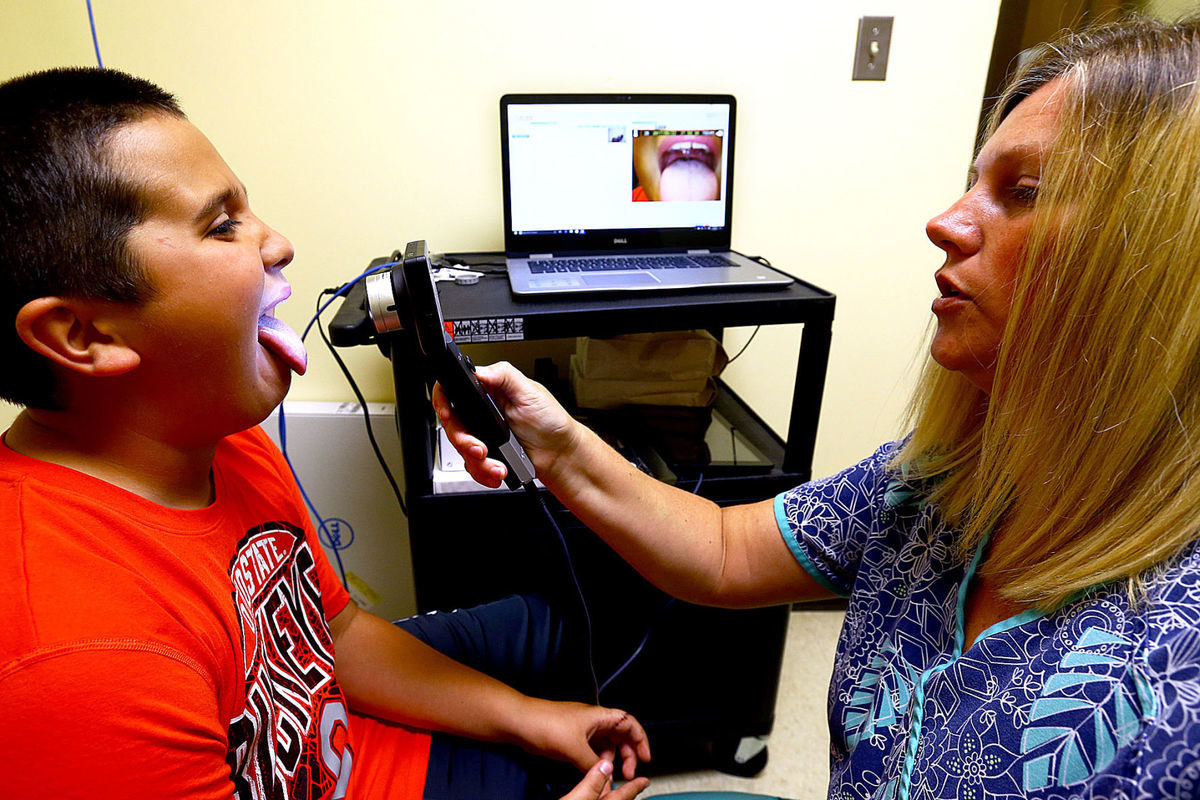HANOVER, IN –
Original article can be found: http://www.kokomotribune.com/
New initiative takes advantage of recent legislation easing telemedicine restrictions
But not anymore.
In January, the rural school district located along the Ohio River in Hanover installed two new virtual clinics. Instead of getting in the car, students can now just walk down the hallway and see a licensed physician via video conference.
If a student needs medication, the physician can call in a prescription to the local pharmacy, and parents can pick it up the same day.
Superintendent Trevor Jones said, for a rural school district like his where access to medical care is limited, the new in-house clinic has been a game changer.
“The whole goal is to help those kids who really don’t have access to a physician to be able to provide that care right here at school,” he said.
The district’s virtual clinic is part of a new telehealth initiative by the Indiana Rural Health Association, a nonprofit organization developed in 1997 that aims to improve the health of Hoosiers living in rural areas.
The group launched the school-based telemedicine program in October after receiving federal grant funding through the U.S. Health Resources & Services Administration. At the same time, it became the first initiative of its kind in the state.
Hayley Ready, the nonprofit’s rural community outreach coordinator, said any rural school district where at least half the students qualify for free or reduced lunches can apply to receive a telehealth clinic at no cost to the district.
She said that cost can ring up to more than $20,000 to purchase and install the equipment. Without the grant money, it’s unlikely rural, low-income school districts could afford to operate a virtual clinic on their own.
“Telehealth is great, but the initial cost of the equipment is too high for most schools to buy,” she said. “It’s something schools definitely would not be able to budget on their own.”
The first telehealth clinic launched in October at Elwood Community School Corp. Since then, three other school districts have installed virtual clinics, including Crothersville Community Schools, Scott County School District 1 and Southwestern Jefferson County Schools.
Ready said the Indiana Rural Health Association plans to launch clinics at eight other school districts this year and hopes to have telehealth equipment in up to 25 schools by 2020.
She said the end goal for installing school-based telehealth clinics is to boost medical access for students who might have a hard time seeing a physician at a brick-and-mortar hospital. That’s an issue for families in which parents can’t get off work to take their child to a doctor, or don’t have a vehicle to drive there.
“Even a five mile drive in a rural community can be too far if you don’t have a mode of transportation,” Ready said. “Those barriers keep some kidos from seeing a doctor, and their cases ended up becoming an emergency when they wouldn’t have to be.”
At the same time, that access ensures kids aren’t unnecessarily missing class for a doctor’s visit, she said.
Southwestern Jefferson County Schools Superintendent Jones said keeping kids in class has been one of the biggest advantages of having a virtual clinic, and that’s why the district also allows teachers and staff to utilize the clinic.
“If a kid misses school, they miss their education,” he said. “If a teacher misses school, 100 kids could miss out on an education.”
Jones said since the clinics launched in January, 80 students have utilized it for medical exams. That’s the highest turnout of all the school-based clinics up and running so far.
Now, the district has even bigger plans to put its telehealth clinic to good use. Jones said the district is running all required physical exams for student athletes through the clinic this year. Next year, he hopes to conduct wellness physicals for all 1,350 students in the district to pinpoint any health issues students might face.
“We believe you have to be healthy to learn and healthy to earn,” Jones said. “There’s a correlation between your education and your health.”
Jones said it could take up to four days to schedule a face-to-face appointment in the past. Now, students who are acting out during school should be able to talk to a counselor within an hour to determine if they pose a risk to themselves or other students.
Heather Gordon, the nurse at Elwood Intermediate School who oversees that district’s telehealth clinic, said the Madison County clinic also partnered with a behavioral-health provider to offer counseling to students. She said about 10 kids are currently utilizing the clinic for those services.
“I think everybody that has used it has been pretty pleased,” she said. “It’s a huge convenience for both the parents and kids.”
The school-based telehealth initiative is just one part of a new and booming telemedicine industry in Indiana that started taking off last year when state lawmakers approved legislation making it easier to treat patients using telehealth services.
That legislation for the first time allowed providers to prescribe medication based solely upon exams conducted via video appointments without first having an in-office visit.
Lawmakers expanded telemedicine access even further this year by allowing doctors to prescribe behavioral-health medication deemed a controlled substance that was previously restricted by the state’s telehealth laws.
Many of the state’s major health networks have now launched telehealth services. That includes Indiana University Health, the state’s most comprehensive health-care system, which started its program in January 2016 and now has 3,500 patients enrolled in its telemedicine video services, according to Ron Stiver, president of IU Health’s system clinical services.
Indiana Rural Health Association’s Ready said lifting restrictions on telemedicine has paved the way for the school-based clinic initiative and gone a long way in getting treatment for kids in rural areas who might not otherwise have easy access to a doctor.
“Some people are very excited about telemedicine and some are skeptical,” she said. “I don’t know if you can ever replace that hands on, face-to-face experience, but if the option is not seeing a doctor or using telemedicine, telemedicine is the better option.”
Share this Post













